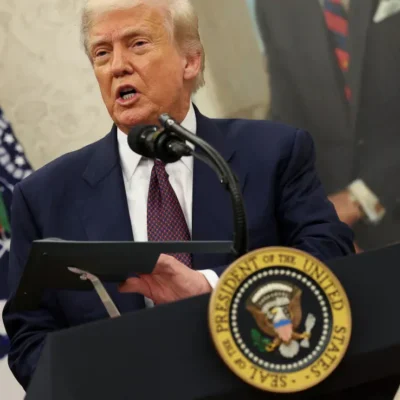The SNAP junk food restriction introduced during the Trump administration has stirred intense discussions across the United States. This policy, aiming to limit the purchase of unhealthy food items with food stamps, has left millions divided. Supporters believe it’s a step toward better public health, while critics argue it’s an unnecessary government intrusion into personal freedom.
In this article, we’ll explore what this SNAP policy change really means, how it impacts beneficiaries, what motivated the move, and what both supporters and opponents are saying.
What Is SNAP and How Does It Work?
SNAP, or the Supplemental Nutrition Assistance Program, is the largest food assistance program in the U.S. It helps low-income individuals and families buy food each month using an Electronic Benefit Transfer (EBT) card. On average, more than 40 million Americans rely on SNAP each year.
Before the Trump-era restriction, recipients could buy nearly any food or beverage product, except alcohol, tobacco, and hot prepared meals. This included snacks like chips, candy, soda, and other processed items often criticized for having little to no nutritional value.
The Reason Behind the SNAP Junk Food Restriction
The Trump administration justified the restriction by highlighting America’s growing obesity epidemic, especially among low-income communities. The idea was to encourage healthier food choices and reduce long-term public health costs.
Key points behind the decision:
- Combat obesity: Junk food contributes to rising obesity and diabetes rates.
- Improve nutritional outcomes: Encouraging purchases of fruits, vegetables, and whole grains.
- Taxpayer accountability: Ensuring taxpayer money supports nutritious food rather than empty calories.
Sonny Perdue, the former Secretary of Agriculture under Trump, said:
“SNAP should be a support for families working to improve their lives—not a subsidy for sugary drinks and processed snacks.”
What Foods Were Restricted?
Under the proposed SNAP junk food restriction, the following items were either limited or discouraged:
- Sugary soft drinks and sodas
- Candy and chocolate
- Ice cream and frozen desserts
- Chips and salty snacks
- Cookies and pastries
The goal was not to ban all snack items entirely but to reduce the availability of these products through SNAP, especially in high volumes.
Supporters: A Step Toward Public Health Reform

Health professionals and some policymakers welcomed the move. They argued that SNAP should promote nutritional responsibility and healthy eating habits, not just access to any calories.
Main arguments in favor:
- SNAP purchases should align with the USDA’s nutritional guidelines.
- Encouraging healthy eating can reduce long-term healthcare costs.
- Children in SNAP households deserve access to better food choices.
A 2016 study by the USDA revealed that nearly 20 cents of every SNAP dollar was spent on sugary drinks. Critics argued this was a misuse of taxpayer funds and that reform was long overdue.
Dr. Marion Nestle, a well-known food policy expert, stated:
“SNAP must move toward supporting a food environment that fights—not fuels—chronic disease.”
Critics: An Attack on Choice and Dignity
Despite public health intentions, many advocates for low-income communities viewed the policy as paternalistic and discriminatory.
Criticisms of the policy:
- Freedom of choice: Telling people what they can and cannot buy feels intrusive.
- Stigma: SNAP recipients already face stigma; more restrictions worsen the situation.
- Implementation issues: Retailers would need complex systems to track “banned” items.
- Cultural sensitivity: What counts as “junk food” can vary across cultures.
Stacy Dean, VP for food assistance policy at the Center on Budget and Policy Priorities, said:
“We shouldn’t treat low-income Americans differently than anyone else at the grocery store.”
Many also noted that wealthy Americans can buy junk food freely—why limit those who already struggle?
Was the Policy Ever Fully Implemented?
While the Trump administration strongly pushed for junk food limitations under SNAP, it faced legal challenges and opposition from both advocacy groups and some state governments. As a result, the plan was never fully rolled out nationwide.
However, the debate sparked state-level experiments. For example:
- Minnesota and New York both requested waivers to test SNAP restrictions on sugary drinks but were denied.
- Some cities experimented with incentives for buying healthy food, rather than punishing unhealthy choices.
These cases showed that while the Trump-era rule didn’t become a national law, it influenced ongoing discussions on food policy reform.
Alternative Solutions to Promote Healthy Eating
Instead of strict bans, many experts suggest incentive-based programs to guide better food choices among SNAP users.
Examples of incentive programs:
- Double Up Food Bucks: A program that matches SNAP dollars spent on fruits and vegetables.
- Healthy Incentives Pilot (HIP): A USDA test that gave extra funds for buying healthy foods—participants increased their fruit and vegetable consumption by 26%.
Other strategies include:
- Nutrition education
- Better access to farmer’s markets
- Partnerships with grocery stores to promote healthy options
The Role of Food Deserts and Accessibility
One major criticism of the restriction policy was that it ignored food deserts—areas where healthy food is hard to find. In such places, convenience stores dominate, and fresh produce is scarce.
Limiting junk food without improving access to healthy alternatives would only punish SNAP users who already have limited options.
For example:
- In parts of rural Mississippi or inner-city Detroit, grocery stores are miles away.
- Many residents rely on local dollar stores or gas stations that offer mostly processed foods.
Without addressing these root problems, critics argue that restrictions don’t solve the issue.
Public Reaction and Polling
Public opinion remains divided. According to a 2020 Pew Research poll:
- 54% supported some form of SNAP food restriction.
- 43% opposed restrictions, citing freedom of choice.
Among SNAP recipients, reactions were mixed. Some felt the restrictions were insulting, while others welcomed the push for healthier eating habits.
Here are a few real voices:
- “Don’t treat me like I don’t know how to feed my kids. Teach me instead.” — SNAP recipient, Chicago.
- “If it means my kids eat more vegetables and less candy, I’m okay with it.” — Single mom, Houston.
What Happens Next?
The Biden administration has largely rolled back or paused many of the Trump-era SNAP reforms, including the junk food restriction efforts. However, discussions continue at both the state and federal levels.
Some bipartisan interest remains in:
- Offering incentives for healthy purchases
- Conducting studies on SNAP spending patterns
- Promoting food as medicine initiatives
As America faces ongoing health crises—like rising rates of obesity, diabetes, and heart disease—how SNAP addresses nutrition will likely remain a central issue.
Conclusion: A Debate Far from Over
The SNAP junk food restriction under the Trump administration sparked a critical conversation: What role should the government play in guiding nutrition for low-income families?
While the policy itself didn’t take full effect, it left a lasting mark on public health discussions. Moving forward, a balanced approach may work best—one that respects personal choice while encouraging better health outcomes.
Finding common ground may involve more education, access, and incentives, rather than top-down restrictions.
Do Follow USA Glory On Instagram
Read Next – Can Donald Trump Run for a Third Term? The Constitution Says No






